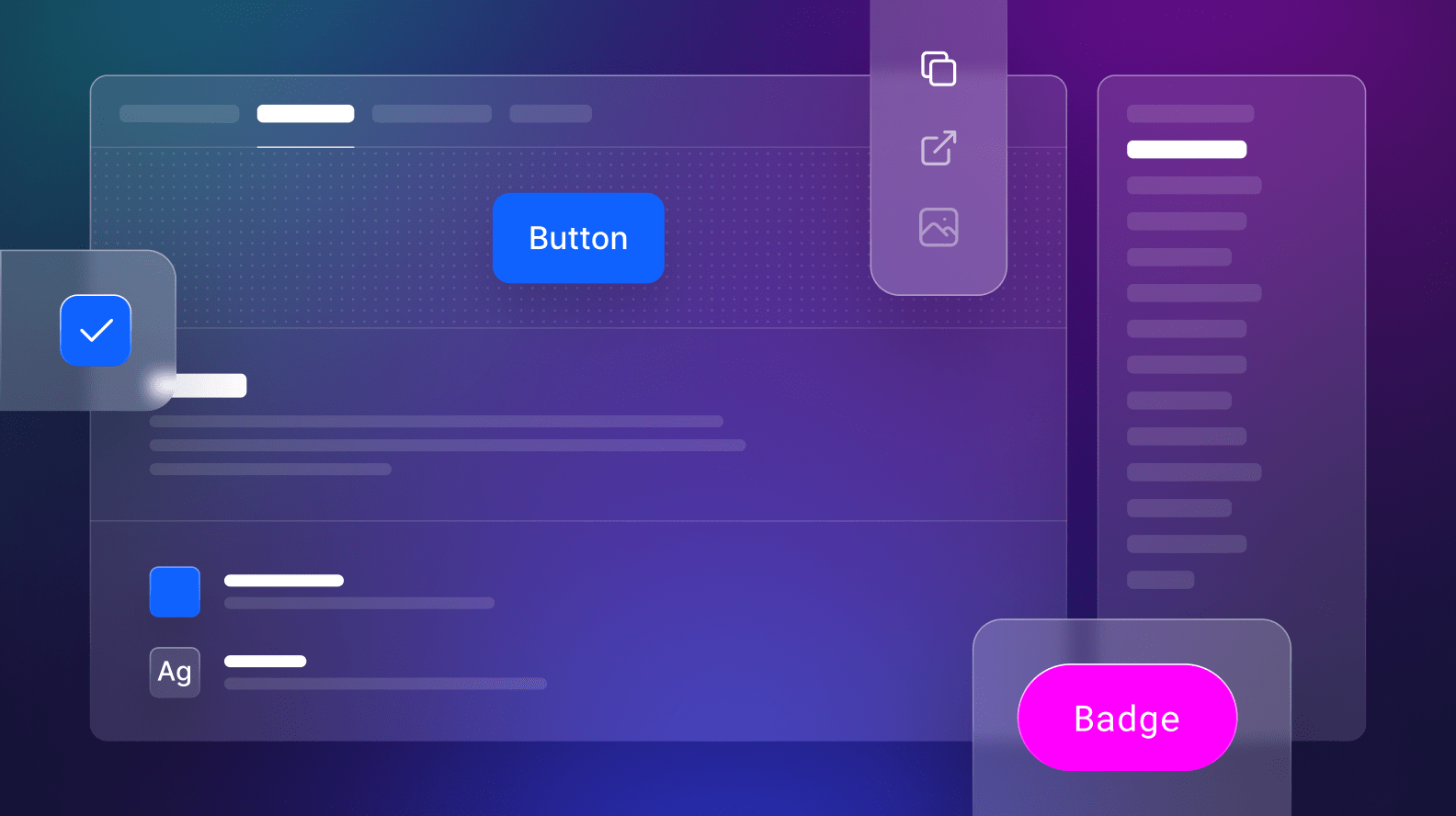Financial institutions have embraced design systems as a strategic tool in their digital transformation. Design systems establish a unified framework that fosters streamlined product development, consistent user experiences, and collaboration across the entire organization. To delve into how industry leaders approach design systems, we hosted a recent panel, "The Blueprint: How Banks Craft Design Systems for Success." The panel brought together experts including Beau Ulrey (U.S. Bank), Erin Potter (Capital One), and Michiel Vissers (Delen Private Bank) to discuss all things design systems and banking. Let's dive into the key takeaways, impactful quotes, and best practices shared during this insightful discussion.
Main takeaways
Driving the engine of modernization with design systems
Design systems have become a fundamental pillar in the modernization strategies of many financial institutions. As Erin Potter, Senior Manager at Capital One, underscored, "the biggest transformation I've seen is that design systems have been a part of our modernization journey." These systems create a bridge between different teams, products, and platforms, enabling seamless updates and ensuring consistency across the customer experience. Design systems allow banks to keep pace with changing technologies and customer needs, ensuring they remain competitive by offering digital products that are both cutting-edge and user-friendly.
"The biggest transformation I've seen is that design systems have been a part of our modernization journey." — Erin Potter, Senior Manager at Capital One
Security and accessibility: The cornerstones of banking design systems
Security and accessibility are top priorities when crafting design systems for the banking industry. "We want to make sure everything is secure, that we have a good authentication system as well as one layer of protection there..." emphasizes Michiel of Delen Private Bank. This unwavering focus influences choices regarding plugins, tools, and the overall development approach. Banks have a duty to protect customers' financial information, and accessibility opens doors to those with disabilities. By embedding these principles into their design systems, banks can create responsible and inclusive digital experiences.
The power of reusability and scalability
Design systems enable banks to achieve reusability and scalability unlike ever before. From simple elements like buttons, icons, and typography to complex, pre-built components, a well-designed system unlocks efficiency. Financial interactions often involve forms, tables, and graphs. By designing and cataloging these elements for rapid deployment, teams can spend less time reinventing the wheel and more time innovating. Scalability is equally vital for banks, and a design system offers a structured way to grow and adapt to changing needs.
Success metrics: Adoption, community, and standards
Banks often rely upon various metrics to track the success of their design systems. Analyzing component usage and detachment rates in tools like Figma provides valuable insights into adoption patterns and areas for improvement. "Listen and learn is the most important. It's two words, but it's the same principle. It counts as one. It's all about finding ways in our component lifecycle...to understand what teams need..." notes Beau Ulrey, Senior Design System Manager at U.S. Bank. Fostering active internal communities further contributes to a design system's impact, with elements like office hours and support channels encouraging widespread use and a knowledge base for designers and developers. Finally, strict adherence to brand and accessibility standards is imperative. Design systems are crucial in upholding brand identity and ensuring a seamless experience for all users.
Navigating challenges: Adoption, legacy, and finding the right pace
Even with its promise, implementing and maintaining a design system comes with challenges. Adoption needs to be championed across the organization to see tangible results. As Beau Ulrey of U.S. Bank emphasizes, “...it's important that all the designers using the design system understand the value and the why." Showcasing the system's ease of use and the time and effort it can save is paramount. Integrating a design system with legacy systems can be complex, requiring careful planning and updates. Additionally, managing different speeds of operation between the core design system team and product teams is essential for long-term success.
This recap offers snapshots of the valuable insights shared during Supernova's panel, check out the full recording for even more insights.
As the use of design systems continues to grow in the banking industry, these best practices will guide institutions in creating systems that effectively meet user needs, streamline development, and drive success in the digital landscape. Interested in exploring design systems further? Check out Supernova for powerful tools to help you build and manage your design system!




.png)